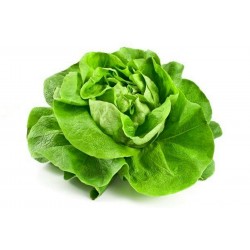Menu
-
MenuGeri
- Home
-
Kategoriler
-
-
Kategoriler
-
Sebze tohumları
-
Ülkelere Göre Çeşitler
- Ermenistan'dan çeşitler
- BH'den Çeşitler
- Hırvatistan'dan Çeşitler
- Fransa'dan Çeşitler
- Almanya'dan Çeşitler
- Yunanistan'dan Çeşitler
- Macaristan Çeşitleri
- Hindistan'dan Çeşitler
- İtalya'dan çeşitleri
- Japonya'dan Çeşitler
- Kuzey Makedonya çeşitleri
- Peru Çeşitleri
- Rusya'dan Çeşitler
- Sırbistan'dan Çeşitler
- Slovenya'dan Çeşitler
- İspanya Çeşitleri
- Tayland çeşitleri
- Türkiye'den Çeşitler
- ABD'den Çeşitler
- Domates tohumları
- Mısır tohumları
- Kabak ailesi
- Fasulye ailesi
- Salatalık tohumları
- Dolma biber tohumları
- Havuç ailesi
- Soğan ailesi
- Marul tohumları
- Patates ailesi
- Lahana ailesi
- Turp tohumları
- Pancar ailesi
- Karpuz tohumları
- Kavun tohumları
- Karnabahar tohumları
- Ayçiçeği ailesi
-
Ülkelere Göre Çeşitler
- Meyve tohumları
- Acı biber tohumları
- Tıbbi bitki tohumları
- Tırmanma bitki tohumları
- Ağaçlar - Çalı tohumları
- Palmiye tohumları
- Süs bitkileri tohumları
- Tütün tohumları
-
Sebze tohumları
-
-
-
-
- YENİ ÜRÜNLER
- Hesap oluştur
- Teslimat - Ödeme
- FAQ
Last Product Reviews
Out of the two seeds, one germinated and the other one was dead and floatin...
By
 Riikka H on 07/03/2024
Riikka H on 07/03/2024
Verified Purchase
46 adet ürün var.
Sıralama ölçütü:
Toplam 46 üründen 16-30 arası gösteriliyor

İtalya'dan çeşitli
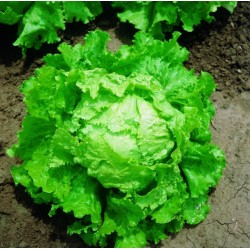
Marul Tohumları BATAVIA...
Fiyat
€1,85
(SKU: PL 5)
Seeds Gallery EU,
5/
5
<h2><strong><span class="tlid-translation translation" lang="tr"><span title="" class="">Marul Tohumları BATAVIA BIONDA DI PARIGI</span></span></strong></h2>
<h2><span style="color: #ff0000;"><strong><span class="tlid-translation translation" lang="tr"><span title="" class="alt-edited">1000 (1g) tohumların Paketi için fiyat.</span></span></strong></span></h2>
<p><span class="tlid-translation translation" lang="tr"><span title="" class="">İtalyan Heirloom Batavia Bionda Di Parigi, gevrek ve altın olan büyük ve ağır bir kafa üreten orta-erken bir çeşittir.</span> <span title="" class="">Açık yeşil yumuşak yaprakları ve belirgin gevrek kaburga ile sıkıca sarılmış büyük bir yuvarlak kafa.</span><br><br><span title="" class="">İlkbaharda, son don tarihinden altı hafta önce soğuk çerçevelerde veya tünellerde marul ekin.</span> <span title="" class="">Aynı anda ışıklar altında daha fazla tohum içmeye başlayın ve üç haftalık olduklarında ayarlayın.</span><br><br><span title="">Ortalama geçen bahar don tarihinden iki hafta önce daha fazla marul ekleyin.</span><br><br><span title="">Marul tohumları genellikle toprak sıcaklıkları 55 ila 75 derece arasında olduğunda iki ila sekiz gün içinde filizlenir.</span> <span title="">Sonbaharda, ilk sonbahar donunuzdan sekiz hafta önce başlayan iki haftalık aralıklarla her türlü marul ekin.</span></span></p><script src="//cdn.public.n1ed.com/G3OMDFLT/widgets.js"></script>
PL 5 (1g)

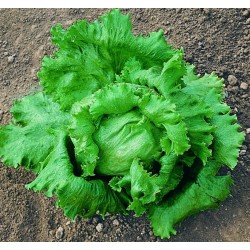
LETTUCE BRASILIANA Seeds
Fiyat
€1,85
(SKU: PL 6)
Seeds Gallery EU,
5/
5
<h2><strong>LETTUCE BRASILIANA Seeds</strong></h2>
<h2><span style="color: #ff0000;"><strong>Price for Package of 100 seeds.</strong></span></h2>
<p>Brasiliana: Similar in nature to an Iceberg lettuce. Large, tightly wrapped head with crunchy leaves.</p>
<p>Lettuce (Lactuca sativa) is an annual plant of the daisy family Asteraceae. It is most often grown as a leaf vegetable, but sometimes for its stem and seeds. Lettuce was first cultivated by the ancient Egyptians who turned it from a weed, whose seeds were used to produce oil, into a food plant grown for its succulent leaves, in addition to its oil-rich seeds. Lettuce spread to the Greeks and Romans, the latter of whom gave it the name lactuca, from which the English lettuce is ultimately derived. By 50 AD, multiple types were described, and lettuce appeared often in medieval writings, including several herbals. The 16th through 18th centuries saw the development of many varieties in Europe, and by the mid-18th century cultivars were described that can still be found in gardens. Europe and North America originally dominated the market for lettuce, but by the late 20th century the consumption of lettuce had spread throughout the world.</p>
<p>Generally grown as a hardy annual, lettuce is easily cultivated, although it requires relatively low temperatures to prevent it from flowering quickly. It can be plagued with numerous nutrient deficiencies, as well as insect and mammal pests and fungal and bacterial diseases. L. sativa crosses easily within the species and with some other species within the Lactuca genus; although this trait can be a problem to home gardeners who attempt to save seeds, biologists have used it to broaden the gene pool of cultivated lettuce varieties. World production of lettuce and chicory for calendar year 2010 stood at 23 620 000/23,620,000 tonnes, half of which came from China.</p>
<p>Lettuce is most often used for salads, although it is also seen in other kinds of food, such as soups, sandwiches and wraps; it can also be grilled.[3] One variety, the woju (莴苣), or asparagus lettuce, is grown for its stems, which are eaten either raw or cooked. Lettuce is a rich source of vitamin K and vitamin A, and is a moderate source of folate and iron. Contaminated lettuce is often a source of bacterial, viral and parasitic outbreaks in humans, including E. coli and Salmonella. In addition to its main use as a leafy green, it has also gathered religious and medicinal significance over centuries of human consumption.</p>
<p><strong>Taxonomy and etymology</strong></p>
<p>Lactuca sativa is a member of the Lactuca (lettuce) genus and the Asteraceae (sunflower or aster) family.[4] The species was first described in 1753 by Carl Linnaeus in the second volume of his Species Plantarum.[5] Synonyms for L. sativa include Lactuca scariola var. sativa,[1] L. scariola var. integrata and L. scariola var. integrifolia.[6] L. scariola is itself a synonym for L. serriola, the common wild or prickly lettuce.[2] L. sativa also has many identified taxonomic groups, subspecies and varieties, which delineate the various cultivar groups of domesticated lettuce.[7] Lettuce is closely related to several Lactuca species from southwest Asia; the closest relationship is to L. serriola, an aggressive weed common in temperate and subtropical zones in much of the world.</p>
<p>The Romans referred to lettuce as lactuca (lac meaning milk in Latin), an allusion to the white substance, now called latex, exuded by cut stems.[9] This word has become the genus name, while sativa (meaning "sown" or "cultivated") was added to create the species name.[10] The current word lettuce, originally from Middle English, came from the Old French letues or laitues, which derived from the Roman name.[11] The name romaine came from that type's use in the Roman papal gardens, while cos, another term for romaine lettuce, came from the earliest European seeds of the type from the Greek island of Cos, a center of lettuce farming in the Byzantine period.</p>
<p><strong>Description</strong></p>
<p>Lettuce's native range spreads from the Mediterranean to Siberia, although it has been transported to almost all areas of the world. Plants generally have a height and spread of 6 to 12 inches (15 to 30 cm). The leaves are colorful, mainly in the green and red color spectrums, with some variegated varieties. There are also a few varieties with yellow, gold or blue-teal leaves. Lettuces have a wide range of shapes and textures, from the dense heads of the iceberg type to the notched, scalloped, frilly or ruffly leaves of leaf varieties.[14] Lettuce plants have a root system that includes a main taproot and smaller secondary roots. Some varieties, especially those found in the United States and Western Europe, have long, narrow taproots and a small set of secondary roots. Longer taproots and more extensive secondary systems are found in varieties from Asia.</p>
<p>Depending on the variety and time of year, lettuce generally lives 65–130 days from planting to harvesting. Because lettuce that flowers (through the process known as "bolting") becomes bitter and unsaleable, plants grown for consumption are rarely allowed to grow to maturity. Lettuce flowers more quickly in hot temperatures, while freezing temperatures cause slower growth and sometimes damage to outer leaves.[16] Once plants move past the edible stage, they develop flower stalks up to 3 feet (0.9 m) high with small yellow blossoms.[17] Like other members of the tribe Cichorieae, lettuce inflorescences (also known as flower heads or capitula) are composed of multiple florets, each with a modified calyx called a pappus (which becomes the feathery "parachute" of the fruit), a corolla of five petals fused into a ligule or strap, and the reproductive parts. These include fused anthers that form a tube which surrounds a style and bipartite stigma. As the anthers shed pollen, the style elongates to allow the stigmas, now coated with pollen, to emerge from the tube.[15][18] The ovaries form compressed, obovate (teardrop-shaped) dry fruits that do not open at maturity, measuring 3 to 4 mm long. The fruits have 5–7 ribs on each side and are tipped by two rows of small white hairs. The pappus remains at the top of each fruit as a dispersal structure. Each fruit contains one seed, which can be white, yellow, gray or brown depending on the variety of lettuce.</p>
<p>The domestication of lettuce over the centuries has resulted in several changes through selective breeding: delayed bolting, larger seeds, larger leaves and heads, better taste and texture, a lower latex content, and different leaf shapes and colors. Work in these areas continues through the present day.[19] Scientific research into the genetic modification of lettuce is ongoing, with over 85 field trials taking place between 1992 and 2005 in the European Union and United States to test modifications allowing greater herbicide tolerance, greater resistance to insects and fungi and slower bolting patterns. However, genetically modified lettuce is not currently used in commercial agriculture.</p>
<p><strong>History</strong></p>
<p>Lettuce was first cultivated in ancient Egypt for the production of oil from its seeds. This plant was probably selectively bred by the Egyptians into a plant grown for its edible leaves,[21] with evidence of its cultivation appearing as early as 2680 BC.[9] Lettuce was considered a sacred plant of the reproduction god Min, and it was carried during his festivals and placed near his images. The plant was thought to help the god "perform the sexual act untiringly."[22] Its use in religious ceremonies resulted in the creation of many images in tombs and wall paintings. The cultivated variety appears to have been about 30 inches (76 cm) tall and resembled a large version of the modern romaine lettuce. These upright lettuces were developed by the Egyptians and passed to the Greeks, who in turn shared them with the Romans. Circa 50 AD, Roman agriculturalist Columella described several lettuce varieties – some of which may have been ancestors of today's lettuces.</p>
<p>Lettuce appears in many medieval writings, especially as a medicinal herb. Hildegard of Bingen mentioned it in her writings on medicinal herbs between 1098 and 1179, and many early herbals also describe its uses. In 1586, Joachim Camerarius provided descriptions of the three basic modern lettuces – head lettuce, loose-leaf lettuce, and romaine (or cos) lettuce.[12] Lettuce was first brought to the Americas from Europe by Christopher Columbus in the late 15th century.[23][24] Between the late 16th century and the early 18th century, many varieties were developed in Europe, particularly Holland. Books published in the mid-18th and early 19th centuries describe several varieties found in gardens today.</p>
<p>Due to its short lifespan after harvest, lettuce was originally sold relatively close to where it was grown. The early 20th century saw the development of new packing, storage and shipping technologies that improved the lifespan and transportability of lettuce and resulted in a significant increase in availability.[26] During the 1950s, lettuce production was revolutionized with the development of vacuum cooling, which allowed field cooling and packing of lettuce, replacing the previously used method of ice-cooling in packing houses outside the fields.</p>
<p>Lettuce is very easy to grow, and as such has been a significant source of sales for many seed companies. Tracing the history of many varieties is complicated by the practice of many companies, particularly in the US, of changing a variety's name from year to year. This was done for several reasons, the most prominent being to boost sales by promoting a "new" variety or to prevent customers from knowing that the variety had been developed by a competing seed company. Documentation from the late 19th century shows between 65 and 140 distinct varieties of lettuce, depending on the amount of variation allowed between types – a distinct difference from the 1,100 named lettuce varieties on the market at the time. Names also often changed significantly from country to country.[28] Although most lettuce grown today is used as a vegetable, a minor amount is used in the production of tobacco-free cigarettes; however, domestic lettuce's wild relatives produce a leaf that visually more closely resembles tobacco.</p>
<p><strong>Cultivation</strong></p>
<p>A hardy annual, some varieties of lettuce can be overwintered even in relatively cold climates under a layer of straw, and older, heirloom varieties are often grown in cold frames.[25] Lettuces meant for the cutting of individual leaves are generally planted straight into the garden in thick rows. Heading varieties of lettuces are commonly started in flats, then transplanted to individual spots, usually 8 to 14 inches (20 to 36 cm) apart, in the garden after developing several leaves. Lettuce spaced further apart receives more sunlight, which improves color and nutrient quantities in the leaves. Pale to white lettuce, such as the centers in some iceberg lettuce, contain few nutrients.</p>
<p>Lettuce grows best in full sun in loose, nitrogen-rich soils with a pH of between 6.0 and 6.8. Heat generally prompts lettuce to bolt, with most varieties growing poorly above 75 °F (24 °C); cool temperatures prompt better performance, with 60 to 65 °F (16 to 18 °C) being preferred and as low as 45 °F (7 °C) being tolerated.[30] Plants in hot areas that are provided partial shade during the hottest part of the day will bolt more slowly. Temperatures above 80 °F (27 °C) will generally result in poor or non-existent germination of lettuce seeds.[30] After harvest, lettuce lasts the longest when kept at 32 °F (0 °C) and 96 percent humidity. Lettuce quickly degrades when stored with fruit such as apples, pears and bananas that release the ripening agent ethylene gas. The high water content of lettuce (94.9 percent) creates problems when attempting to preserve the plant – it cannot be successfully frozen, canned or dried and must be eaten fresh.</p>
<p>Lettuce varieties will cross with each other, making spacing of 5 to 20 feet (1.5 to 6.1 m) between varieties necessary to prevent contamination when saving seeds. Lettuce will also cross with Lactuca serriola (wild lettuce), with the resulting seeds often producing a plant with tough, bitter leaves. Celtuce, a lettuce variety grown primarily in Asia for its stems, crosses easily with lettuces grown for their leaves.[17] This propensity for crossing, however, has led to breeding programs using closely related species in Lactuca, such as L. serriola, L. saligna, and L. virosa, to broaden the available gene pool. Starting in the 1990s, such programs began to include more distantly related species such as L. tatarica.[32] Seeds keep best when stored in cool conditions, and, unless stored cryogenically, remain viable the longest when stored at −4 °F (−20 °C); they are relatively short lived in storage.</p>
<p>At room temperature, lettuce seeds remain viable for only a few months. However, when newly harvested lettuce seed is stored cryogenically, this life increases to a half-life of 500 years for vaporized nitrogen and 3,400 years for liquid nitrogen; this advantage is lost if seeds are not frozen promptly after harvesting.</p>
<p><strong>Culinary use</strong></p>
<p>As described around 50 AD, lettuce leaves were often cooked and served by the Romans with an oil-and-vinegar dressing; however, smaller leaves were sometimes eaten raw. During the 81–96 AD reign of Domitian, the tradition of serving a lettuce salad before a meal began. Post-Roman Europe continued the tradition of poaching lettuce, mainly with large romaine types, as well as the method of pouring a hot oil and vinegar mixture over the leaves.[9] Today, the majority of lettuce is grown for its leaves, although one type is grown for its stem and one for its seeds, which are made into an oil.[21] Most lettuce is used in salads, either alone or with other greens, vegetables, meats and cheeses. Romaine lettuce is often used for Caesar salads, with a dressing that includes anchovies and eggs. Lettuce leaves can also be found in soups, sandwiches and wraps, while the stems are eaten both raw and cooked.[10] The consumption of lettuce in China developed differently from in Western countries, due to health risks and cultural aversion to eating raw leaves. In that country, "salads" were created from cooked vegetables and served hot or cold. Lettuce was also used in a larger variety of dishes than in Western countries, contributing to a range of dishes including bean curd and meat dishes, soups and stir-frys plain or with other vegetables. Stem lettuce, widely consumed in China, is eaten either raw or cooked, the latter primarily in soups and stir-frys.[44] Lettuce is also used as a primary ingredient in the preparation of lettuce soup.</p>
<p><strong>Nutritional content</strong></p>
<p>Depending on the variety, lettuce is an excellent source (20% of the Daily Value, DV, or higher) of vitamin K (97% DV) and vitamin A (21% DV) (table), with higher concentrations of the provitamin A compound, beta-carotene, found in darker green lettuces, such as Romaine.[31] With the exception of the iceberg variety, lettuce is also a good source (10-19% DV) of folate and iron (table).</p>
<p><strong>Religious and medicinal lore</strong></p>
<p>In addition to its usual purpose as an edible leafy vegetable, lettuce has had a number of uses in ancient (and even some more modern) times as a medicinal herb and religious symbol. For example, ancient Egyptians thought lettuce to be a symbol of sexual prowess[43] and a promoter of love and childbearing in women. The Romans likewise claimed that it increased sexual potency.[52] In contrast, the ancient Greeks connected the plant with male impotency,[9] and served it during funerals (probably due to its role in the myth of Adonis's death), and British women in the 19th century believed it would cause infertility and sterility. Lettuce has mild narcotic properties; it was called "sleepwort" by the Anglo-Saxons because of this attribute, although the cultivated L. sativa has lower levels of the narcotic than its wild cousins.[52] This narcotic effect is a property of two sesquiterpene lactones which are found in the white liquid (latex) in the stems of lettuce,[29] called lactucarium or "lettuce opium".</p>
<p>Lettuce is also eaten as part of the Jewish Passover Seder, where it is considered the optimal choice for use as the bitter herb, which is eaten together with the matzah.</p>
<p>Some American settlers claimed that smallpox could be prevented through the ingestion of lettuce,[52] and an Iranian belief suggested consumption of the seeds when afflicted with typhoid.[53] Folk medicine has also claimed it as a treatment for pain, rheumatism, tension and nervousness, coughs and insanity; scientific evidence of these benefits in humans has not been found. The religious ties of lettuce continue into the present day among the Yazidi people of northern Iraq, who have a religious prohibition against eating the plant.</p>
PL 6 (100 S)

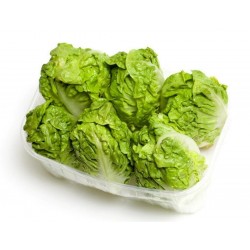
Great Lakes 118 Lettuce Seed
Fiyat
€2,25
(SKU: PL 2)
Seeds Gallery EU,
5/
5
<div id="idTab1" class="rte">
<h2><span style="font-size:14pt;"><strong>Great Lakes</strong><strong> 118</strong><strong> Lettuce Seed</strong></span></h2>
<h2 class="rte align_justify"><span style="color:#ff0000;"><strong><span style="font-size:14pt;">Price for Package of 2000 seeds (2g).</span></strong></span><span style="color:#ff0000;"><strong><span style="font-size:14pt;"></span></strong></span></h2>
<p>Great Lakes lettuce produces large crisp heads of lettuce that have been a farming standard for over 60 years.</p>
<p>Fantastic flavor and created for salads and sandwiches.</p>
<p>The standard for commercial growers for decades. Now forgotten, but not by the backyard gardeners and farmers' market growers!</p>
<p>Excellent early spring and late fall lettuce.</p>
</div>
<div> </div>
<div> </div>
<div> </div>
PL 2 (2 g)


Sırbistan'dan Çeşit
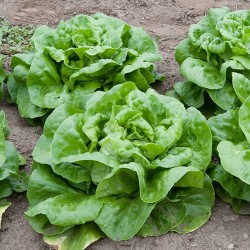
Marul Tohumları ÇEKME
Fiyat
€1,85
(SKU: PL 7)
Seeds Gallery EU,
5/
5
<!DOCTYPE html>
<html>
<head>
<meta http-equiv="Content-Type" content="text/html; charset=UTF-8" />
</head>
<body>
<h2><strong>Marul Tohumları ÇEKME</strong></h2>
<h2><span style="color: #ff0000;"><strong>500 tohumların Paketi için fiyat.</strong></span></h2>
<p>Erken bir butterhead çeşidi. Butterhead Marul Atraksiyon: Büyük, sert başlı, yeşil yoğun bir rengin pürüzsüz yaprakları hafifçe düzleştirilmiş çeşitli. Mutfaklarımızda ve bahçelerimizde harika bir klasik.</p>
<p>Tohumların net ağırlığı: 4 gr. = +/- 3200 tohum</p>
</body>
</html>
PL 7 (500 S)

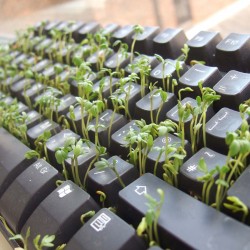
Tohumlar Tere (Lepidium...
Fiyat
€1,35
(SKU: PL 11)
Seeds Gallery EU,
5/
5
<h2><strong>Tohumlar Tere (Lepidium sativum)</strong></h2>
<h2><span style="color: #ff0000;" class=""><strong>500 (1g) tohum paketi için fiyat.</strong></span></h2>
<div>
<p><b>Tere</b><span> </span>(<i>Lepidium sativum</i>),<span> </span>turpgiller<span> </span>(Brassicaceae) familyasından, yaprakları salata olarak yenen baharlı bir bitki türüdür, vücuttaki yağ yakımını hızlandırıyor. İnce yaprakları pişince acılaştığı için çiğ yemek gerekir. Ayrıca içinde birçok<span> </span>vitamin<span> </span>barındıran bir<span> </span>bitkidir.</p>
<p>Anadolu'da bolca yetişir. Anavatanı<span> </span>Asya'dır.<span> </span>Karaciğere<span> </span>faydalıdır. Sigaranın zararlarını azaltır.<sup class="noprint Inline-Template">[<i><span title="">kaynak belirtilmeli</span></i>]</sup></p>
<p>Yabani olanına<span> </span><i>ıspatan</i><span> </span>denir.</p>
</div><script src="//cdn.public.n1ed.com/G3OMDFLT/widgets.js"></script>
PL 11 (1g)

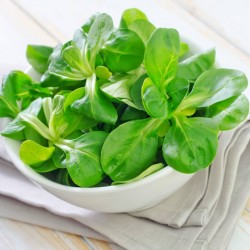
Kuzugevreği Tohumlar...
Fiyat
€1,85
(SKU: PL 8)
Seeds Gallery EU,
5/
5
<h2><strong>Kuzugevreği Tohumlar (Valerianella locusta)</strong></h2>
<h2><span style="color:#ff0000;"><strong>330 (1 g) tohum paketi için fiyat.</strong></span></h2>
<p>Bu minyatür salata yeşillikleri yüzyıllar boyunca orta ve kuzey Avrupa'da popüler olmuştur ve ilk olarak 1590'larda Henry XIV tarafından popülerleştirilmiştir. Koyu yeşil yapraklar nefis nane şekerli ve üretkendir. Soğuk havalarda yetiştirilirse en iyisi. Çok soğuk dayanıklı.</p>
<p>Hasat günleri 45.</p>
<p>Mısır Salatası, erken ilkbahar ve geç sonbahar için harika lezzetli bir salata mahsulüdür. 10 cm çapında oval, koyu yeşil yaprakların küçük başlarını hasat edin.</p>
<p>Bitki boyu: 10 ila 40 cm. Dik büyüyen uzun ve dallı gövdelidir. Gövdenin içi boş ve sık tüylüdür.</p>
<p>Yapraklar: Alt yapraklar açık yeşil renkli ve 4 sıralı rozet halindedir. Tabansal yapraklar karşılıklı Basal Yapraklar karşılıklı, ters yumurta şeklinde, şeritsi ve çok damarlıdır. Üst yapraklar sapsız, dar ve hafif dişlidir.</p>
<p>Çiçek durumu: Küçük mavi renkli çiçekler gruplar halinde zayıf ve uçsal talkımlarda bulunurlar. En uçtaki çiçek grubu yuvarlak şekillidir.</p>
<p>Meyve: Meyve 2.5 mm uzunluğunda, hafifçe basık, yuvarlak, düz ve tüysüzdür.</p>
PL 8 (300 S)

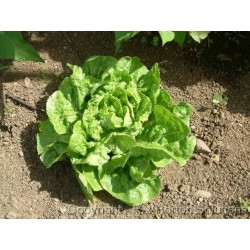
Lettuce Seeds 'Green...
Fiyat
€1,50
(SKU: PL 1)
Seeds Gallery EU,
5/
5
<h2><strong>Lettuce Seeds 'Green Mignonette' Butterhead</strong></h2>
<h2 class=""><span style="color: #f80000;"><strong>Price for Package of 100 (0,09g) seeds.</strong></span></h2>
<div>Green Mignonette' is a butterhead lettuce type. It is an excellent home garden variety as it is easy to grow with exceptional eating qualities and is slow to bolt. It has soft, deep green, ruffled leaves, a loose heart and is very tender and sweet. It is suitable for planting for most of the year. Days to harvest: 25 days salad mix; 46 days full size.</div><script src="//cdn.public.n1ed.com/G3OMDFLT/widgets.js"></script>
PL 1 (100 S)

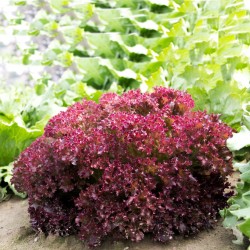
Lettuce Seeds Lollo Rossa...
Fiyat
€1,10
(SKU: VE 38 LRC)
Seeds Gallery EU,
5/
5
<h2 class=""><strong>Lettuce Seeds Lollo Rossa</strong></h2>
<h2><span style="color: #ff0000;"><strong>Price for Package of 100 (0.09g) or 3000 (2.7g) seeds.</strong></span><span style="color: #ff0000; font-size: 10pt;"><strong><br /></strong></span></h2>
<p>Non-hearting type, red-tinged leaves with waved and serrated edges. This variety also looks great in bedding schemes!<br />Cultivation<br />Sow seeds thinly from spring to mid-summer ¼in deep in drills 15in apart. <br />They can also be sown indoors from mid-spring in cooler areas for setting outdoors once the soil has warmed up. A moist well-drained soil which has had plenty of compost during the previous autumn is best. In very hot weather it is best to water the soil before sowing and to make sowings during the early afternoon. To lengthen the cropping period sow only a few seeds at a time at 2 - 3-week intervals </p>
<script src="//cdn.public.n1ed.com/G3OMDFLT/widgets.js"></script>
VE 38 LRC (0,09g)

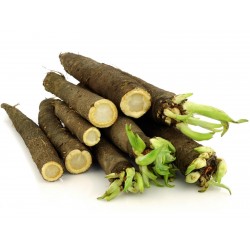
Black Salsify Seeds...
Fiyat
€1,95
(SKU: VE 129)
Seeds Gallery EU,
5/
5
<div id="idTab1" class="rte">
<h2><strong>Black Salsify Or Spanish Salsify Seeds</strong></h2>
<h2><span style="color: #ff0000;"><strong>Price for Package of 15 seeds.</strong></span></h2>
<p>Scorzonera hispanica, black salsify or Spanish salsify, also known as black oyster plant, serpent root, viper's herb, viper's grass or simply scorzonera, is a perennial member of the genus Scorzonera in the sunflower family (Asteraceae), cultivated as a root vegetable in the same way as salsify (Tragopogon porrifolius), also in the sunflower family.</p>
<p>The scorzonera sweet is a crystallized dessert made from scorzonera in Évora, Alentejo, Portugal. It is listed on the Ark of Taste.</p>
<p><strong>Description</strong></p>
<p>The black salsify plant has heads of yellow ray flowers. The thin black taproot grows up to one meter long and up to 2 centimetres (0.8 in) in diameter. It has a black skin with white internal flesh.</p>
<p><strong>History</strong></p>
<p>Black salsify is native to Southern Europe and the Near East. As is indicated by its binomial name, it is generally thought to have spread to the rest of Europe from Spain, but the first mention of the vegetable by a Western writer came from Leonhard Rudolf, who reported seeing scorzonera at the market of Aleppo in Syria, in 1575. Although it is often claimed that the name of the genus Scorzonera probably derives from the Old French word scorzon, meaning snake (or "adder" to be exact), it is more likely that the name is derived from the Italian "scorza negra" meaning "black bark"/"black peel" and obviously indicating the dark brown to black skin of the root. The Celtic and Germanic peoples are believed to have eaten the black salsify, which was considered efficacious against the bubonic plague and snake bites until the 16th century. The plant was being cultivated as a vegetable in Italy and France by 1660 and, soon after, the Belgians were growing vast fields of it.</p>
<p><strong>Food value</strong></p>
<p>The black salsify is considered nutritious: it contains proteins, fats, asparagine, choline, laevulin, as well as minerals such as potassium, calcium, phosphorus, iron, sodium, and vitamins A, B1, E and C. It also contains the glycoside inulin, conferring a mild sweetness that is suitable for diabetics.</p>
<p><strong>Preparation</strong></p>
<p>The thick black skin of the salsify root is usually considered inedible and can be removed either prior to or after boiling. If the skin is removed prior to boiling, the peeled root should be immediately immersed in water mixed with vinegar or lemon juice, in order to prevent discolouring. Since the root contains an extremely sticky latex, it is often more convenient to peel it after boiling the root for 20 to 25 minutes (or less).</p>
<p>Black salsify is often eaten together with other vegetables, such as peas and carrots. But it is also popular served like asparagus in a white sauce, such as bechamel sauce or mustard sauce. Boiled salsify roots may also be coated with batter and deep fried.</p>
<p><strong>Cultivation</strong></p>
<p>Black salsify is hitherto mainly a European crop. Belgium, France and the Netherlands are the world's largest producers of black salsify; significant amounts are also produced in Germany. In the latter country, 'Hoffmanns Schwarzer Pfahl' is a cultivar widely used by commercial growers, while 'Duplex' is popular among small-scale gardeners. Some other cultivars are widely available, but because it was rather a localized crop before being produced for a wider market there are comparatively few landraces.</p>
<p>Harvesting is somewhat complicated, as the roots are quite fragile, and broken material loses freshness. Entire roots will keep fresh all winter if stored in a cool dark place, due to their robust black corky skin. In root cellars they may keep fresh well into springtime. It is, however, very hardy and will grow well in most cool-temperate climates and usually yield 15–20 metric tons of roots per hectare. In British gardens it is common to profit from its perennial character by leaving it in the ground until its roots have grown to sufficient size for harvesting; this can take two years. Commercially, it can be grown best as the year's second crop of a field.</p>
<p>Sun 09 June, 2019</p>
</div>
VE 129 (15 S)

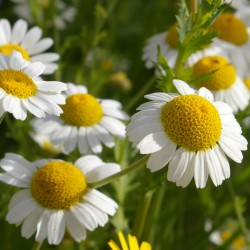
Mayıs papatyası tohumu...
Fiyat
€2,45
(SKU: MHS 8)
Seeds Gallery EU,
5/
5
<h2><strong>Mayıs papatyası tohumu (Matricaria chamomilla)</strong></h2>
<h3><span style="color: #ff0000;"><strong>8.000 tohumların (0,5g) ait Paketi için fiyat.</strong></span></h3>
<div>
<p> <i style="color: #202122; font-size: 14px;"><b>Matricaria chamomilla</b></i><span style="color: #202122; font-size: 14px;"><span> </span>(eşanlamlısı:<span> </span></span><i style="color: #202122; font-size: 14px;">Matricaria recutita</i><span style="color: #202122; font-size: 14px;"><span> </span>) yaygın olarak<span> </span></span><b style="color: #202122; font-size: 14px;">papatya<span> </span>bilinen</b><span style="color: #202122; font-size: 14px;"><span> </span></span><b style="color: #202122; font-size: 14px;">Alman papatyası</b><span style="color: #202122; font-size: 14px;">,</span><sup id="cite_ref-umaryland_1-0" class="reference" style="color: #202122; font-size: 11.2px;">[1]</sup><span style="color: #202122; font-size: 14px;"><span> </span></span><b style="color: #202122; font-size: 14px;">Macar papatyası</b><span style="color: #202122; font-size: 14px;"><span> </span>(kamilla),<span> </span></span><b style="color: #202122; font-size: 14px;">yabani papatya</b><span style="color: #202122; font-size: 14px;">,<span> </span></span><b style="color: #202122; font-size: 14px;">mavi papatya</b><span style="color: #202122; font-size: 14px;">,<span> </span></span><b style="color: #202122; font-size: 14px;">kokulu mayweed</b><sup id="cite_ref-2" class="reference" style="color: #202122; font-size: 11.2px;">[2]</sup><sup id="cite_ref-3" class="reference" style="color: #202122; font-size: 11.2px;">[3]</sup><span style="color: #202122; font-size: 14px;">.<span> </span></span>Asteraceae<span style="color: #202122; font-size: 14px;"><span> </span>karma<span> </span></span>familyasının<span style="color: #202122; font-size: 14px;"><span> </span>yıllık bir bitkisidir. Yaygın olarak<span> </span></span><i style="color: #202122; font-size: 14px;">M. recutita</i><span style="color: #202122; font-size: 14px;"><span> </span>adı diğer türler de papatya olarak kullanılmasına rağmen bitkisel ürün<span> </span></span>papatyasının<span style="color: #202122; font-size: 14px;"><span> </span>en sevilen kaynağına uygulanır. Papatya çoğunlukla mide-bağırsak problemlerine karşı kullanımıyla bilinir; ayrıca cilt tahrişini tedavisinde kullanılabilir.<br /><br /></span></p>
<p><i>Matricaria chamomilla</i><span> </span>Güney<span> </span>ve<span> </span>Doğu Avrupa'ya özgü<span> </span>Asteraceae<span> </span>ailesinin bir üyesidir. Bugün bu bitki tüm kıtalarda bulunabilir.<sup id="cite_ref-:0_5-0" class="reference" style="font-size: 11.2px;">[5]</sup><span> </span>15-60 santimetre (5,9-23,6 in) yüksekliğe kadar büyüyen, dallı, dik ve pürüzsüz bir<span> </span>gövdesi<span> </span>vardır. Uzun ve dar<span> </span>yapraklar<span> </span>bipinnate veya tripinnatedir.<span> </span>Çiçekler<span> </span>panikülat çiçek başlarında (capitula) taşınır. Beyaz ışın çiçekleri ligule ile donatılmıştır disk çiçekleri ise sarıdır. İçi boş çiçek tablası şişmiş ve kabuksuzdur. Bu özellik Alman papatyasını kabuklu çiçek tablası olan mısır papatyasından (<i>Anthemis arvensis</i><span> </span>) ayırır. Çiçekler yaz başından ortasına kadar açar ve güçlü, aromatik bir kokuya sahiptir.</p>
<p>Çiçekler ona karakteristik koku ve ilginç özellikler veren mavi<span> </span>uçucu bir yağ<span> </span>içerir. Yağın içerdiği chamazulene atfedilebilen bu renk özelliği bitkinin neden Mavi Papatya adıyla da anıldığını açıklar. Meyvesi sarımsı kahverengi bir aken( kapçık meyve)dir.<br /><br /></p>
<h2 style="color: #000000; font-size: 1.5em;"><span class="mw-headline" id="Etimoloji">Etimoloji</span></h2>
<p style="color: #202122; font-size: 14px;">Papatya kelimesi, "toprak-elma" anlamına gelen<span> </span>Yunanca<span> </span>χαμαίμηλον (<span> </span><i>chamaimēlon</i><span> </span>)'dan gelir,<sup id="cite_ref-6" class="reference" style="font-size: 11.2px;">[6]</sup><span> </span>"yerde" anlamına gelen χαμαί (<i>chamai</i>)<span> </span><sup id="cite_ref-7" class="reference" style="font-size: 11.2px;">[7]</sup><span> </span>ve "elma" anlamına gelen μήλον (<i>mēlon</i>)' dan türetilmiştir.<sup id="cite_ref-8" class="reference" style="font-size: 11.2px;">[8]</sup><span> </span>Bitkinin elma kokusundan dolayı böyle adlandırılır.</p>
<p style="color: #202122; font-size: 14px;">Latincede<span> </span><i>matrisin</i><span> </span>anlamlarından biri<span> </span><i>rahimdir</i>; Bu cinse Matricaria adı verildi çünkü<span> </span><i>Matricaria chamomilla</i><span> </span>adet krampları ve adet öncesi sendroma bağlı uyku bozuklukları gibi jinekolojik şikayetleri tedavi etmek için yaygın olarak kullanıldı. Bitkinin oldukça güçlü antispazmodik ve antienflamatuvar bileşenler içerdiği ve özellikle mide ve bağırsak kramplarının tedavisinde etkili olduğu bulunmuştur.<br /><br /></p>
<h3 style="color: #000000; font-size: 1.2em;"><span class="mw-headline" id="İnsan_tıbbında_kullanımı">İnsan tıbbında kullanımı</span></h3>
<p>Papatya çiçeğinde ikincil metabolitler olarak 120'den fazla kimyasal bileşen bulunmuştur. Bunlardan çoğu çiçeklerin mavi uçucu yağındadır.<sup id="cite_ref-:0_5-2" class="reference" style="font-size: 11.2px;">[5]</sup><span> </span>Uçucu yağının<span> </span>kimyasal bileşenleri şunları içerir:<span> </span>terpenes<span> </span>bisabolol,<sup id="cite_ref-McKay_DL_2006_10-0" class="reference" style="font-size: 11.2px;">[10]</sup><span> </span>farnesen ve chamazulene ;<span> </span>flavonoidler<span> </span>apigenin, quercetin, patuletin ve luteolin ; ve kumarin.</p>
<p>Alman papatyası,<span> </span>bitkisel tıpta<span> </span>ağrılı<span> </span>mide, cilt bakımı,<span> </span>irritabl bağırsak sendromu(IBS) ve hafif uyku verici olarak kullanılır.<sup id="cite_ref-11" class="reference" style="font-size: 11.2px;">[11]</sup><span> </span>Aynı zamanda hafif bir müshil olarak kullanılır ve anti-inflamatuvar<sup id="cite_ref-12" class="reference" style="font-size: 11.2px;">[12]</sup><span> </span>ve bakterisidal etkiye sahiptir.<sup id="cite_ref-13" class="reference" style="font-size: 11.2px;">[13]</sup><span> </span>Hayvanlarla yapılan araştırmalar papatya için<span> </span>antispazmodik,<span> </span>anksiyolitik,<span> </span>anti-inflamatuar<span> </span>ve bazı antimutajenik ve kolesterol düşürücü etkileri önermektedir.<sup id="cite_ref-14" class="reference" style="font-size: 11.2px;">[14]</sup><span> </span>Ayrıca papatyanın mide ve bağırsak kramplarının tedavisinde etkili olduğu bulunmuştur.<sup id="cite_ref-labunix_9-1" class="reference" style="font-size: 11.2px;">[9]</sup></p>
<p>Papatya yağı işlenerek hap haline getirilebilir ancak yararlı etkiden yararlanmak için çiçek başı da bir bütün olarak kullanılabilir. Bir fincan<span> </span>bitki çayı<span> </span>için iki çay kaşığı kuru<span> </span>çiçek<span> </span>miktarı bir fincana konularak yapılan<span> </span>bitkinin çayı<span> </span>uçucu yağların buharlaşmasını önlemek için üstü kapalı olarak 10- 15 dakika demlenmelidir. Hücrelerin içinde yeni bir aktif madde oluşumu nedeniyle<span> </span>marc<span> </span>bastırılmalıdır bu daha sonra<span> </span>hücre duvarlarını<span> </span>kırarak serbest bırakılabilir ancak bu madde kaynama noktasına çok yakın bir yerde oluşur. Ağrıyan mide için her sabah iki - üç ay boyunca bazıları aç karnına bir bardak içmeyi önerir.<sup id="cite_ref-Chamomile_15-0" class="reference" style="font-size: 11.2px;">[15]</sup></p>
<h3 style="color: #000000; font-size: 1.2em;"><span id="Olas.C4.B1_yan_etkileri"></span><span class="mw-headline" id="Olası_yan_etkileri">Olası yan etkileri</span></h3>
<p>Yakupotunun akrabası olan papatya alerji semptomlarına neden olabilir ve yakupotu alerjili kişilerde yakupotu poleni ile çapraz reaksiyona girebilir. Aynı zamanda kumarin de içerir bu nedenle örneğin<span> </span>kan sulandırıcılarla<span> </span>olası ilaç etkileşimlerinden kaçınmak için özen gösterilmelidir. Çok nadir olmakla birlikte çok yüksek dozlarda papatya mide bulantısına ve kusmaya neden olabilir. Daha da nadiren kızarıklıklar yapabilir.<sup id="cite_ref-16" class="reference" style="font-size: 11.2px;">[16]</sup><span> </span>Tip-IV alerjik reaksiyonlar (yani kontakt dermatit) yaygındır ve papatya çayı içen 38 yaşındaki bir erkekte şiddetli Tip-I reaksiyon vakası (yani<span> </span>anafilaksi) bildirilmiştir.<sup id="cite_ref-17" class="reference" style="font-size: 11.2px;">[17]</sup></p>
<h2 style="color: #000000; font-size: 1.5em;"><span id="Yeti.C5.9Ftirilmesi"></span><span class="mw-headline" id="Yetiştirilmesi">Yetiştirilmesi</span></h2>
<h3 style="color: #000000; font-size: 1.2em;"><span id="Tohumla_.C3.A7o.C4.9Faltma_.C5.9Fartlar.C4.B1"></span><span class="mw-headline" id="Tohumla_çoğaltma_şartları">Tohumla çoğaltma şartları</span></h3>
<p>Kökeni Güney-Batı Asya, Güney-Doğu Avrupa'dadır ancak günümüzde neredeyse tüm dünyada yetişir.<sup id="cite_ref-Franke_R._2012_18-0" class="reference" style="font-size: 11.2px;">[18]</sup></p>
<p>Papatya yetiştiriciliği için toprağın özel bir kaliteye ihtiyacı yoktur ancak mahsul en iyi şekilde iyi üst topraklı dengeli topraklarda yetişir.<sup id="cite_ref-Anbautelegram_Echte_Kamille_19-0" class="reference" style="font-size: 11.2px;">[19]</sup><span> </span>Papatya<span> </span>talepkar olmayan bir bitkidir ve oldukça toleranslıdır. Mahsul hafif ila ağır topraklarda büyür. Doğada yetişen papatya türleri normalde kumludan tınlı topraklara kadar her toptakta büyür, topraklar çoğunlukla asidiktir ve açık olmalıdır.<sup id="cite_ref-Franke_R._2012_18-1" class="reference" style="font-size: 11.2px;">[18]</sup></p>
<p>Üç ana yetiştirme tekniği vardır:<span> </span>sonbaharda<span> </span>yıllık bir mahsul olarak tohumla,<span> </span>ilkbaharda<span> </span>yıllık mahsul olarak tohumla veya tohumla yetiştirmenin kendiliğinden olduğu<span> </span>çok yıllık<span> </span>mahsul olarak kullanmak. En yaygın yöntem makinelerden daha yüksek derecede yararlanabilmek için sonbahar ve<span> </span>ilkbahar<span> </span>tohumla yetiştirme karışımıdır.<span> </span>Papatya<span> </span>tohumları çok küçük olduğundan ekim için özel bir ekim makinesi kullanılır. Tohum dikimi normalde 25 cm lik mesafe ve sıralar halinde ve yaklaşık 2.0-2.5 kg/hektar<span> </span>halinde yapılır. Tohum yatağının düz ve yabancı otsuz olmalı ve aynı zamanda tohum ekiminden sonra yeniden sıkıştırılmalıdır. Yeniden sıkıştırma tohumlamadan sonra toprağın ağır bir rulo ile yuvarlanması gerektiğinden çok önemlidir. Aksi takdirde küçük tohumlar toprakla temas etmez ve bu da çimlenmeyi engeller. Papatya bitkisinin çimlenmesi ve gençlik dönemi için çok fazla neme ihtiyacı vardır. 1-2 hafta sonra çimlenme başlar.<sup id="cite_ref-Franke_R._2012_18-2" class="reference" style="font-size: 11.2px;">[18]</sup></p>
<p>Ekim<span> </span>sonbaharda<span> </span>yapılırsa en uygun zaman Eylül ayıdır. Sonbaharda tohumu ekilen papatya en çok verimi sağlar. Eylülün kaçında ekim yapılırsa yapılsın çiçeklenme gün uzunluğu 17 saat olduğunda başlar ki bu<span> </span>Orta Avrupa'da<span> </span>Mayıs sonu veya Haziran başıdır.<sup id="cite_ref-Franke_R._2012_18-3" class="reference" style="font-size: 11.2px;">[18]</sup></p>
<p>İlkbaharda<span> </span>ekim yaparak hasat zamanı ekilebilir bu da uzun ekim ve hasat dönemlerinin yanı sıra diğer yetiştirme çalışmaları nedeniyle makinelerin daha çok kullanılmasına yardım eder. Tohum ekimi Mart ve Mayıs ayları arasında yapılır. Ancak daha sonra ekimle verimin düştüğü ve haşere baskısının arttığı söylenebilir. Mahsul temmuzun 2 yarısında hasat edilebilir.<sup id="cite_ref-Franke_R._2012_18-4" class="reference" style="font-size: 11.2px;">[18]</sup></p>
<p>Daha yoğun üretimde tohum dikimi bitki tarafından yapılır ve yetiştirme çok yıllıktır. Son hasattan sonra bitkiler kesilerek tarlaya bırakılır. Daha sonra toprak mekanik olarak işlenir ancak döndürülmez. Tohumlar daha sonra Eylül ayında<span> </span>filizlenir<span> </span>ve toprak üzerinde yabani otlara karşı yardımcı olan halı benzeri bir tabaka oluşur. Verimler<span> </span>sonbahar<span> </span>ekimleriyle karşılaştırılabilir.<sup id="cite_ref-Franke_R._2012_18-5" class="reference" style="font-size: 11.2px;">[18]</sup></p>
<h3 style="color: #000000; font-size: 1.2em;"><span id="G.C3.BCbreleme"></span><span class="mw-headline" id="Gübreleme">Gübreleme</span></h3>
<p>Papatya<span> </span>ortalama besin maddesi statüsüne sahip topraklarda büyüyebilen mütevazı bir bitkidir.<span> </span>Azot<span> </span>(N) ile<span> </span>gübrelemeye<span> </span>artan<span> </span>bitkisel<span> </span>büyüme ile yanıt verir, bu da hasat tekniğinde sorunlara yol açabilir ve hasat zamanı gecikebilir. Sapın iyi gelişmesi için yeterli<span> </span>potasyum<span> </span>(K) gereklidir. Potasyumun<span> </span>fosfora<span> </span>(P) en uygun oranı 1:2 olmalıdır. Bu oran en uygun gübre miktarına yol açar:<sup id="cite_ref-20" class="reference" style="font-size: 11.2px;">[20]</sup></p>
<ul>
<li>40-60 kg/hektar N</li>
<li>50-70 kg/hektar P</li>
<li>100-140 kg/hektar K</li>
</ul>
<p>N ve K filizlenme zamanında verilmelidir. Şu ana kadar mikro besin eksikliği bilinmemektedir.<span> </span>Papatya<span> </span>bitkisi iyi bir üst toprak ile dengeli toprakta en iyi şekilde büyür. Ancak papatya kesiminde kaliteli nedenleriyle organik maddeli<span> </span>gübre<span> </span>verilmemelidir. İşleme şirketi tarafından sorulan bir bakteri bulaşma sınırı varsa organik madde<span> </span>gübresi<span> </span>çiçeğin ve bunun sonucunda ortaya çıkan ürünlerin bakteriyel bulaşması için risktir. Ürün dönüşündeki diğer mahsullerde örneğin papatyadan önce organik madde ile gübreleme şiddetle tavsiye edilir.<sup id="cite_ref-Anbautelegram_Echte_Kamille_19-1" class="reference" style="font-size: 11.2px;">[19]</sup></p>
<h3 style="color: #000000; font-size: 1.2em;"><span id="Ha.C5.9Fere_ve_yabanc.C4.B1_ot_kontrol.C3.BC"></span><span class="mw-headline" id="Haşere_ve_yabancı_ot_kontrolü">Haşere ve yabancı ot kontrolü</span></h3>
<p>Papatya<span> </span>iyi şekilde yabancı ot kontrolü gerektiren yavaş bir gençlik gelişimine sahiptir. Tohum dikiminden önce yabancı ot içermeyen uygun bir tohum yatağına sahip olmak önemlidir bu nedenle artık<span> </span>herbisit<span> </span>kullanılabilir. Mevcut seçici<span> </span>herbisitlerin<span> </span>yokluğundan dolayı<span> </span>çimlenmeden<span> </span>sonra papatya bitkisinin güçlü<span> </span>vejetatif<span> </span>büyümesi başlayana kadar sadece mekanik yabancı ot kontrolü mümkündür.<sup id="cite_ref-Anbautelegram_Echte_Kamille_19-2" class="reference" style="font-size: 11.2px;">[19]</sup></p>
<p>Yaprak bitleri<span> </span>papatya<span> </span>üretimi için büyük tehdittir çünkü sadece daha yavaş büyümeye değil aynı zamanda uğur böceklerinin çekilmesine de yol açar. Çiçekleri hasat ettikten sonra böcekleri çiçeklerden ayırmak neredeyse imkansızdır. Bu hasat edilen papatyada kullanım amacına göre kalite sorunlarına yol açar.<sup id="cite_ref-Anbautelegram_Echte_Kamille_19-3" class="reference" style="font-size: 11.2px;">[19]</sup></p>
<p>Avrupa üretiminde ortaya çıkan en önemli zararlılar tüylü küf,<span> </span>külleme<span> </span>ve pastır.<sup id="cite_ref-Anbautelegram_Echte_Kamille_19-4" class="reference" style="font-size: 11.2px;">[19]</sup></p>
<h3 style="color: #000000; font-size: 1.2em;"><span id=".C3.9Cr.C3.BCn_d.C3.B6n.C3.BC.C5.9F.C3.BC"></span><span class="mw-headline" id="Ürün_dönüşü">Ürün dönüşü</span></h3>
<p>Papatya<span> </span>kendi kendine uyumlu bir mahsul olarak bilinir bu da çok yıllık bir ekimin mümkün olduğu anlamına gelir.<sup id="cite_ref-21" class="reference" style="font-size: 11.2px;">[21]</sup><span> </span>Papatya için<span> </span>ürün dönüşünün<span> </span>neden olması gereken en önemli koşul yabani otsuz tohum yatağıdır. Bu normalde sıralı mahsullerin yetiştirilmesinden sonra verilir (örn.<span> </span>Patates),<span> </span>buğday<span> </span>veya<span> </span>mısır. Mahsulden sonraki papatya için büyük bir sorun gönüllü papatya tohumlarıdır. Hasat işlemi nedeniyle bir sonraki üründe çok sayıda tohum toprağa bırakılır ve filizlenir. Bu nedenle<span> </span>herbisitleri<span> </span>hedef alan papatyaya karşı toleranslı takip eden bir ürüne sahip olmak çok önemlidir.<sup id="cite_ref-Franke_R._2012_18-6" class="reference" style="font-size: 11.2px;">[18]</sup></p>
<h3 style="color: #000000; font-size: 1.2em;"><span class="mw-headline" id="Hasat">Hasat</span></h3>
<h4 style="color: #000000;"><span id=".C3.87i.C3.A7eklenme_ve_hasat_zaman.C4.B1"></span><span class="mw-headline" id="Çiçeklenme_ve_hasat_zamanı">Çiçeklenme ve hasat zamanı</span></h4>
<p>Papatya bitkisi genellikle yılda 2-3 kez çiçek açar.<sup id="cite_ref-Anbautelegram_Echte_Kamille_19-5" class="reference" style="font-size: 11.2px;">[19]</sup><span> </span>Bu yılda birden fazla hasatla da hesaba katılır. Çiçeklenme dönemi yaklaşık 50–65 gün iken bir çiçeğin gelişimi yaklaşık 20–25 gün sürer.<sup id="cite_ref-Franke_R._2012_18-7" class="reference" style="font-size: 11.2px;">[18]</sup></p>
<p>Tam çiçeklenmeyle hasat başlar. Hasat tarihinin doğru zamanda seçimi hasat edilen ürünün kalitesi için çok önemlidir. En önemli kalite özelliği, çiçek başlangıcından itibaren sürekli artan ve ışın çiçekleri yatay veya hafif aşağıya doğru baktığı zaman maksimuma ulaşan çiçeklerdeki<span> </span>uçucu yağ<span> </span>içeriğidir. Bu nedenle çiçek başlarının çoğu açıldığında hasat biter.<sup id="cite_ref-Franke_R._2012_18-8" class="reference" style="font-size: 11.2px;">[18]</sup></p>
<p>En uygun hasat tarihinin belirlenmesine bu nedenle çok dikkat edilmeli ve tarih objektif ve doğru bir şekilde tanımlanabilmelidir. En uygun tanımlama için, çiçeklenme indeksini belirlemeye yönelik denklemler geliştirilmiştir. Aşağıdaki denklem çiçeklerin artan verim, azalan<span> </span>uçucu yağ içeriği<span> </span>ve<span> </span>uçucu yağdaki<span> </span>içeriklerin bileşiminin değişimi arasındaki bir uzlaşmayı ifade eder. Bu denklemde aşırı açan çiçek sayısı eksi çiçek tomurcuk sayısı ile toplam çiçek sayısı arasındaki oran belirlenir.<sup id="cite_ref-Franke_R._2012_18-9" class="reference" style="font-size: 11.2px;">[18]</sup></p>
<p><span class="mwe-math-element"><span class="mwe-math-mathml-inline mwe-math-mathml-a11y" style="font-size: 16.52px;"><math xmlns="http://www.w3.org/1998/Math/MathML" alttext="{\displaystyle {\text{çiçeklenme endeksi}}={\frac {V-Kn}{Kn+eB+V}}}"><semantics><annotation encoding="application/x-tex">{\displaystyle {\text{çiçeklenme endeksi}}={\frac {V-Kn}{Kn+eB+V}}}</annotation></semantics></math></span><img src="https://wikimedia.org/api/rest_v1/media/math/render/svg/d0312d0a00a92abaaec431819a375209d571e312" class="mwe-math-fallback-image-inline" aria-hidden="true" alt="{\displaystyle {\text{çiçeklenme endeksi}}={\frac {V-Kn}{Kn+eB+V}}}" /></span></p>
<p><span class="mwe-math-element"><span class="mwe-math-mathml-inline mwe-math-mathml-a11y" style="font-size: 16.52px;"><math xmlns="http://www.w3.org/1998/Math/MathML" alttext="{\displaystyle {\text{Kn}}={\text{henüz açmamış çiçek tomurcukları}}}"><semantics><annotation encoding="application/x-tex">{\displaystyle {\text{Kn}}={\text{henüz açmamış çiçek tomurcukları}}}</annotation></semantics></math></span><img src="https://wikimedia.org/api/rest_v1/media/math/render/svg/f672dd8c1bf0fd8a4d09b8dec23c150b2ec6c07e" class="mwe-math-fallback-image-inline" aria-hidden="true" alt="{\displaystyle {\text{Kn}}={\text{henüz açmamış çiçek tomurcukları}}}" /></span></p>
<p><span class="mwe-math-element"><span class="mwe-math-mathml-inline mwe-math-mathml-a11y" style="font-size: 16.52px;"><math xmlns="http://www.w3.org/1998/Math/MathML" alttext="{\displaystyle {\text{eB}}={\text{hasat edilecek çiçekler (borulu çiçekcikler + açmış ışın çiçekcikler )}}}"><semantics><annotation encoding="application/x-tex">{\displaystyle {\text{eB}}={\text{hasat edilecek çiçekler (borulu çiçekcikler + açmış ışın çiçekcikler )}}}</annotation></semantics></math></span><img src="https://wikimedia.org/api/rest_v1/media/math/render/svg/1b9a8eb542a7da0d7a5b4ed8bef5f7e1b9d4aacf" class="mwe-math-fallback-image-inline" aria-hidden="true" alt="{\displaystyle {\text{eB}}={\text{hasat edilecek çiçekler (borulu çiçekcikler + açmış ışın çiçekcikler )}}}" /></span></p>
<pre style="color: #000000;"><span class="mwe-math-element"><span class="mwe-math-mathml-inline mwe-math-mathml-a11y" style="font-size: 16.52px;"><math xmlns="http://www.w3.org/1998/Math/MathML" alttext="{\displaystyle {\text{V}}={\text{aşırı açan çiçekler}}}">
<semantics>
<annotation encoding="application/x-tex">{\displaystyle {\text{V}}={\text{aşırı açan çiçekler}}}</annotation>
</semantics>
</math></span><img src="https://wikimedia.org/api/rest_v1/media/math/render/svg/7b7f08bd7647662a6a773b74d028c40492b8464a" class="mwe-math-fallback-image-inline" aria-hidden="true" alt="{\displaystyle {\text{V}}={\text{aşırı açan çiçekler}}}" /></span> <sup id="cite_ref-Franke_R._2012_18-10" class="reference" style="font-size: 11.2px;">[18]</sup>
</pre>
<p>Papatya için en uygun hasat tarihi yukarıda açıklanan formülle hesaplanan çiçeklenme endeksinin −0,3 ile −0,2<sup id="cite_ref-Franke_R._2012_18-11" class="reference" style="font-size: 11.2px;">[18]</sup><span> </span>veya mevcut bitkilerin yaklaşık% 50-70'inin tam çiçek açtığı zamandır.<sup id="cite_ref-Anbautelegram_Echte_Kamille_19-6" class="reference" style="font-size: 11.2px;">[19]</sup></p>
<h4 style="color: #000000;"><span class="mw-headline" id="Elle_hasat">Elle hasat</span></h4>
<p>Elle hasatta çiçek tomurcukları ya parmaklarla ya da basit teknik aletlerle toplanır örneğin yolma tarakları, tarak kürekleri veya yolma arabaları kullanılır. Bu yöntemler çoğunlukla küçük-ölçekli üretimde veya ekilmemiş papatya hasadında kullanılır. Günümüz tarımsal yetiştirme sistemlerinde hasat genellikle mekanik olarak yapılır.<sup id="cite_ref-Franke_R._2012_18-12" class="reference" style="font-size: 11.2px;">[18]</sup></p>
<h4 style="color: #000000;"><span class="mw-headline" id="Mekanik_hasat">Mekanik hasat</span></h4>
<p>Mekanik hasat tekniklerine rağmen hasat edilen ürünün yüksek kalitede olması çok önemlidir. Buna göre hasat edilen ürünün dikkatli bir şekilde işlenmesi için hasat teknolojisine ilişkin gereksinimler yüksektir. Mekanik hasat yapabilmek ve iyileştirebilmek için çiftçiler çiçek tomurcukları aynı seviyede olacak şekilde tek tip bitki boylu büyük çiçek başlı çeşitler yetiştirmelidir.<sup id="cite_ref-Franke_R._2012_18-13" class="reference" style="font-size: 11.2px;">[18]</sup></p>
<p>Mekanik hasatta asla çiçek tomurcukları değil aynı zamanda sap kısımları da hasat edilir. Bu saplar çoğunlukla 10 mm ila 30 mm uzunluğundadır. Prensipte bu ilaç yapımında kullanılacak kesilmiş çiçek tomurcuklarının kalitesi üzerinde hiçbir etkiye sahip değildir ancak seçim için biraz daha fazla çabaya neden olabilir.<sup id="cite_ref-Franke_R._2012_18-14" class="reference" style="font-size: 11.2px;">[18]</sup></p>
<p>Önemli bir teknik hasat ilkesi döner biçme makineleri, doğrayıcılar veya komple biçerdöverler tarafından kesim yapılmasıdır. Bu durumda tüm çiçek ufku hasat edilir. Özellikle papatya hasadı için gerek çay üretimi gerekse endüstriyel işleme için kıyıcılar kullanılır.<sup id="cite_ref-Franke_R._2012_18-15" class="reference" style="font-size: 11.2px;">[18]</sup><sup id="cite_ref-Anbautelegram_Echte_Kamille_19-7" class="reference" style="font-size: 11.2px;">[19]</sup></p>
<p>Bir diğer çok önemli hasat ilkesiyse keskin yolma tarakları olan tamburların hasat yönünün tersine dönmesidir. Böylelikle bitki stoğu aşağıdan yukarıya taranır. Toplama taraklarının arkasına eklenen bıçaklar sayesinde çiçek tomurcukları kesilir ve diğer genel mekanik hasat teknolojilerinde olduğu gibi bitki sapından kopmaz.<sup id="cite_ref-Franke_R._2012_18-16" class="reference" style="font-size: 11.2px;">[18]</sup></p>
<h4 style="color: #000000;"><span class="mw-headline" id="Verim_seviyesi">Verim seviyesi</span></h4>
<p>Ortalama olarak hektar başına yaklaşık 5–10 dt kuru çiçek maddesi ve hektar başına 50–70 dt kuru sap ve yaprak toplanabilir.<sup id="cite_ref-Anbautelegram_Echte_Kamille_19-8" class="reference" style="font-size: 11.2px;">[19]</sup></p>
<p>Çiçekler % 0,3 ile % 1,5 arasında papatya uçucu yağı içerir.<sup id="cite_ref-Anbautelegram_Echte_Kamille_19-9" class="reference" style="font-size: 11.2px;">[19]</sup></p>
<h3 style="color: #000000; font-size: 1.2em;"><span id="Hasat_sonras.C4.B1_i.C5.9Flem_ve_sonraki_i.C5.9Flemler"></span><span class="mw-headline" id="Hasat_sonrası_işlem_ve_sonraki_işlemler">Hasat sonrası işlem ve sonraki işlemler</span></h3>
<p>Hasat edilen papatya parçalarının yeterli bir hasat sonrası muamelesi mükemmel iç ve dış niteliklerin korunması için çok önemlidir.<sup id="cite_ref-Franke_R._2012_18-17" class="reference" style="font-size: 11.2px;">[18]</sup></p>
<h4 style="color: #000000;"><span class="mw-headline" id="Kurutma">Kurutma</span></h4>
<p>Hasat edilen ürün yaklaşık % 80 su içerir bu nedenle fermantasyon riski altındadır. Depolayabilmek için ürünün sadece % 10-11 su içeriğine kadar kurutulması gerekir. Diğer mahsullere kıyasla daha yüksek fermantasyon riski nedeniyle kurutma işlemi hasattan sonra 2 saati geçmemelidir. Ürün üzerinde yüksek basınçtan kaçınmak ve fermantasyon riskini daha da arttırmamak için depolama yüksekliğinin çok büyük olmamalıdır.</p>
<p>Örneğin güneşte veya bir çatı altında doğal kurutma gibi birkaç kurutma sistemi vardır ancak aynı zamanda kesintili kurutucular, yarı-sürekli raf kurutucular veya sürekli bantlı kurutucularla kurutma da vardır. Her durumda en önemlisi ürünün asla °C üzerinde ısınmamasıdır.<sup id="cite_ref-Franke_R._2012_18-18" class="reference" style="font-size: 11.2px;">[18]</sup></p>
<h4 style="color: #000000;"><span id="se.C3.A7im"></span><span class="mw-headline" id="seçim">seçim</span></h4>
<p>Mekanik hasat nedeni ile hasat edilen üründe sapların payı daha çoktur. Bu nedenle çoğu kez kurutma işleminden hemen önce bir ayırma işlemi yapılır. Bu seçim işlemi genellikle çift cidarlı ters yönde dönen tambur elekleriyle yapılır. Gerekirse daha sonraki bir çalışmada kurutulduktan sonra çiçek tomurcukları üzerindeki sapların kısa kısımları sade çiçek tomurcuğu ürünlerini almak için ayrılır.<sup id="cite_ref-Franke_R._2012_18-19" class="reference" style="font-size: 11.2px;">[18]</sup></p>
<p>El hasadı durumunda seçme işlemi çoğu zaman kurutma işleminden sonra yapılır.<sup id="cite_ref-Franke_R._2012_18-20" class="reference" style="font-size: 11.2px;">[18]</sup></p>
<h4 style="color: #000000;"><span id="Dam.C4.B1tma"></span><span class="mw-headline" id="Damıtma">Damıtma</span></h4>
<p>Papatya çiçeği üretiminin önemli bir nedeni ilaç yapımıiçin kullanılan papatya yağının ekstraksiyonudur. Bu yağ çoğunlukla taze çiçek tomurcuklarından ve çiçek saplarından<span> </span>damıtılarak<span> </span>çıkarılır. Papatya yağının önemli bir bileşeni yağ içeriğinin% 33'üne kadar olan<span> </span>bisabololdür.</p>
<p><span style="color: #202122; font-size: 14px;"> </span></p>
<p></p>
</div>
<div>
<table cellspacing="0" cellpadding="0" border="1">
<tbody>
<tr>
<td colspan="2" width="100%" valign="top">
<p><span style="color: #008000;"><strong>Sowing Instructions</strong></span></p>
</td>
</tr>
<tr>
<td valign="top" nowrap="nowrap">
<p><span style="color: #008000;"><strong>Propagation:</strong></span></p>
</td>
<td valign="top">
<p><span style="color: #008000;">Seeds</span></p>
</td>
</tr>
<tr>
<td valign="top" nowrap="nowrap">
<p><span style="color: #008000;"><strong>Pretreat:</strong></span></p>
</td>
<td valign="top">
<p><span style="color: #008000;">0</span></p>
</td>
</tr>
<tr>
<td valign="top" nowrap="nowrap">
<p><span style="color: #008000;"><strong>Stratification:</strong></span></p>
</td>
<td valign="top">
<p><span style="color: #008000;">0</span></p>
</td>
</tr>
<tr>
<td valign="top" nowrap="nowrap">
<p><span style="color: #008000;"><strong>Sowing Time:</strong></span></p>
</td>
<td valign="top">
<p><span style="color: #008000;">all year round </span></p>
</td>
</tr>
<tr>
<td valign="top" nowrap="nowrap">
<p><span style="color: #008000;"><strong>Sowing Depth:</strong></span></p>
</td>
<td valign="top">
<p><span style="color: #008000;">Needs Light to germinate! Just sprinkle on the surface of the substrate + gently press</span></p>
</td>
</tr>
<tr>
<td valign="top" nowrap="nowrap">
<p><span style="color: #008000;"><strong>Sowing Mix:</strong></span></p>
</td>
<td valign="top">
<p><span style="color: #008000;">Coir or sowing mix + sand or perlite</span></p>
</td>
</tr>
<tr>
<td valign="top" nowrap="nowrap">
<p><span style="color: #008000;"><strong>Germination temperature:</strong></span></p>
</td>
<td valign="top">
<p><span style="color: #008000;">18-20 ° C</span></p>
</td>
</tr>
<tr>
<td valign="top" nowrap="nowrap">
<p><span style="color: #008000;"><strong>Location:</strong></span></p>
</td>
<td valign="top">
<p><span style="color: #008000;">bright + keep constantly moist not wet</span></p>
</td>
</tr>
<tr>
<td valign="top" nowrap="nowrap">
<p><span style="color: #008000;"><strong>Germination Time:</strong></span></p>
</td>
<td valign="top">
<p><span style="color: #008000;">1 week</span></p>
</td>
</tr>
<tr>
<td valign="top" nowrap="nowrap">
<p><span style="color: #008000;"><strong>Watering:</strong></span></p>
</td>
<td valign="top">
<p><span style="color: #008000;">Water regularly during the growing season</span></p>
</td>
</tr>
<tr>
<td valign="top" nowrap="nowrap">
<p><span style="color: #008000;"><strong> </strong></span></p>
</td>
<td valign="top">
<p><br /><span style="color: #008000;"><em>Copyright © 2012 Seeds Gallery - Saatgut Galerie - Galerija semena. </em><em>All Rights Reserved.</em><em></em></span></p>
</td>
</tr>
</tbody>
</table>
</div>
<script src="//cdn.public.n1ed.com/G3OMDFLT/widgets.js"></script>
MHS 8

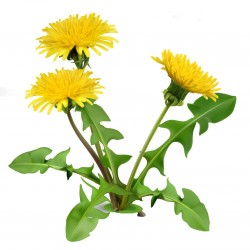
Karahindiba Tohumlar...
Fiyat
€1,85
(SKU: VE 196)
Seeds Gallery EU,
5/
5
<meta http-equiv="Content-Type" content="text/html; charset=UTF-8" />
<h2><strong>Karahindiba Tohumlar (Taraxacum officinale)</strong></h2>
<h2><span style="color: #ff0000;"><strong>50 tohumların Paketi için fiyat.</strong></span></h2>
<p><b>Karahindiba</b><span> </span>(<i>Taraxacum officinale</i>),<span> </span>papatyagiller<span> </span>(Asteraceae) familyasından yaygın bir bitki<span> </span>türü. Çiçekleri<span> </span>sarı, yaprakları yeşil olsa da bitkinin adına "karahindiba" denilmiştir.</p>
<p>Mısır<span> </span>ve Kıpçak Türkleri'nin "katagan", Çağatay Türkleri'nin "saçratku" olarak bildikleri bu bitki günümüze "karahindiba" olarak gelmiştir.<span> </span>Hindiba, Arapça kökenli bir kelimedir. Tedavisi için kullanıldığı<span> </span>göz<span> </span>hastalığı trahomdan kaynaklandığı ileri sürülür.<span> </span>Anadolu'da acıgıcı, "acıgünek", "güneyik", "çıtlık", "cırtlık" ve "arslandişi" olarak bilinse de en yaygın olarak kullanılan adı "<b>radika</b>"dır.</p>
<h2><span class="mw-headline" id="Özellikleri">Özellikleri</span></h2>
<p>Karahindiba Nisan ve Mayıs aylarında tüm tarla kıyılarında çayırlık alanlarla yol kenarlarında yetişen, çok yıllık sarı<span> </span>çiçekli<span> </span>otsu bir bitkidir. İçi "kengel" denilen acı bir sütle dolu uzun kazık kökü, rozet halinde tabanda toplanmış olan derin dişli yapraklarını ve yapraklardan daha uzunca olan<span> </span>çiçek<span> </span>saplarını taşır. Bu sapların tepesinde kömeç halindeki altın sarısı çiçekleri ilkbahardan sonbaharın ortasına kadar açar. Daha sonra bu çiçek kömeçleri karahindibanın tohumlarını taşıyan beyaz toplara dönüşürler. Bu beyaz topçukları oluşturan meyve kapçıkları en hafif<span> </span>rüzgarda<span> </span>bile uçup çevreye dağılır. Bitki böylece yaydığı<span> </span>tohumlarıyla<span> </span>çoğalır. Hortum şeklinde kesilip çok güzel ses çıkardığı için bu ismi almıştır.</p>
<h2><span id="Bile.C5.9Fimi_ve_kullan.C4.B1m.C4.B1"></span><span class="mw-headline" id="Bileşimi_ve_kullanımı">Bileşimi ve kullanımı</span></h2>
<p>Besleyici değeri oldukça yüksek olan Karahindiba, % 5'e varan yüksek bir oranda potasyum içermesinden dolayı, en iyi doğal<span> </span>potasyum<span> </span>kaynaklarından biridir.<span> </span>A vitamini,<span> </span>C vitamini<span> </span>ve<span> </span>nikotinik asit<span> </span>ile<span> </span>kalsiyum<span> </span>ve türlü<span> </span>mineraller<span> </span>yönünden de zengindir. Ayrıca, torexacin, retinol, levulin, inulin gibi bileşikler içerir. Bu nedenle yaprakları salatalara katılıp yenir. Kökü de, yaşken doğranıp salatalara katılır. Kurutulan kökü birçok ülkede öğütülüp acı hindiba kahvesi olarak içilir.<span> </span>Avrupa'nın bazı ülkelerinde ve<span> </span>Hindistan'da tarımı yapılan türleri vardır ve bunların çiçek büyüklüklerinin çapı yedi santimetreye kadar varır. Kök sakızı da denilen bitki, köklerinden çıkan sıvının pıhtılaşıp kurutulmasıyla kauçuk eldesinde de faydalanılır.</p>
<h2><span id="Da.C4.9F.C4.B1l.C4.B1m.C4.B1"></span><span class="mw-headline" id="Dağılımı">Dağılımı</span></h2>
<p>Tüm<span> </span>Avrupa,<span> </span>Kuzey Amerika<span> </span>ve<span> </span>Asya<span> </span>olmak üzere dünyanın hemen her yerinde görülen yaklaşık 100 çeşidiyle kozmopolit bir türdür.</p>
VE 196 (50 S)

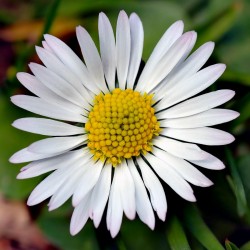
Koyungözü Tohumlar (Bellis...
Fiyat
€2,00
(SKU: F 51)
Seeds Gallery EU,
5/
5
<!DOCTYPE html>
<html>
<head>
<meta http-equiv="Content-Type" content="text/html; charset=UTF-8" />
</head>
<body>
<h2><strong>Koyungözü Tohumlar (Bellis perennis)</strong></h2>
<h2><span style="color: #ff0000;"><strong>50 tohum paketi için fiyat.</strong></span></h2>
<p><b>Koyungözü</b><span> </span>(<i>Bellis perennis</i>),<span> </span>papatyagiller<span> </span>(Asteraceae) familyasından<span> </span>Avrupa<span> </span>kökenli, yaygın bir<span> </span>çayır papatyası<span> </span>türü. Papatya olarak ilk anılan türün bu olduğu düşünülse de, bugün birçok ilgili bitki de aynı ismi taşımaktadır bu nedenle bu türü aynı ismi taşıyan diğer bitkilerden ayırmak için ona<span> </span><b>çayır papatyası</b><span> </span>veya<span> </span><b>adi çayır papatyası</b><span> </span>da denmiştir. Zaman zaman<span> </span><b>İngiliz papatyası</b><span> </span>olarak da anılmıştır. Batı, orta ve kuzey<span> </span>Avrupa<span> </span>yerlisidir.</p>
<p>Otsu bir bitki olan koyungözü, kısa yayılmış köksaplara sahiptir. Daima yeşil kalan 2-5 cm uzunluğunda küçük dairesel veya kaşık şeklinde yaprakları vardır. Çiçek kurulları 2–3 cm çapında, beyaz uzun çiçekçikleri (sıklıkla kırmızı veya kırmızımsı uçlu) ve sarı tüplü çiçekleri vardır. Genellikle yapraksız 2–10 cm'lik gövdelerde oluşurlar. Nadiren gövdelerin boyu 15 cm'ye kadar varabilir.</p>
</body>
</html>
F 51

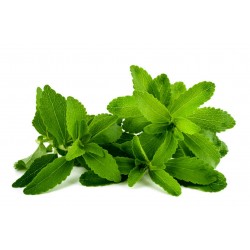
Stevia Tohumu (Stevia...
Fiyat
€1,90
(SKU: MHS 12)
Seeds Gallery EU,
5/
5
<!DOCTYPE html>
<html>
<head>
<meta http-equiv="Content-Type" content="text/html; charset=UTF-8" />
</head>
<body>
<h2><strong>Stevia Tohumu (Stevia rebaudiana)</strong></h2>
<h2><span style="color: #ff0000;"><strong>+ -100 (0,06 g) tohum paketi için fiyat.</strong></span></h2>
<p>Stevia Bitkisi. Bitki çaylarınızda kuru yapraklarını şeker niyetine kullanabileceğiniz stevia bitkisinin bakımı oldukça kolaydır .İsterseniz bahçenizde isterseniz iç mekan içerisinde kolaylıkla yetiştiriciliğini yapabilirsiniz.Saksıda yetiştiriciliğe uygundur.Çiçeklenme döneminde suyu daha fazla ister.Kışın ise yaza göre sulama miktarınızı azaltmalısınız.Güneşli , yarı güneşli bölgelerde yetiştirilebilir.Çok soğuk geçen bölgelerde bitkinin iç mekana alınması tavsiye edilir.</p>
<p>Tohum Ekim Talimatları</p>
<p> -Dış mekanlarda bahar ve yaz aylarında, iç mekanda ise dört mevsim ekebilirsiniz.</p>
<p>-Çimlendirme ortam sıcaklığı 20-22 derecedir.</p>
<p>-Tohumları ekmeden 24 saat içerisinde nemli bir bez içerisinde ekletiniz.</p>
<p>-Çimlendirme saksı içerisinde yapılacaksa ,hazır çiçek topraklarında kullanınız.</p>
<p>-Tohum ocakları arası mesafe 5-10 cm.Açık alanda 20-30 cm arasında olmalıdır.</p>
<p>-Her tohum ocağına 2-3 tohum atılmalıdır.</p>
<p>Çimlenme süresi tahmini 10-20 gündür.Çimlenmesi zor bir bitkidir.</p>
<p>-Çimlendirme toprağı hafif nemli olmalıdır.</p>
<p>-Tohum ekim derinliği 0,5-1cm olmalıdır.</p>
<p>-Çimlendirmeyi ışık gören bir yerde yapmanız tavsiye edilir.</p>
<p> </p>
<p>Yetiştirme Talimatları</p>
<p>-Çimlenen fideler 5-10 cm olunca şaşırtma yapılabilir.</p>
<p>-Fide toprağının sulaması toprak yapısı bozulmayacak şekilde yapılmalıdır.</p>
<p>-Fideleri direk güneşe çıkarmadan önce yarı gölge alanlarda dış ortama alışmasını sağlayınız.</p>
<p>-Saksıda yapılacak olan fide aktarımlarında saksı toprak harcının %20 si ponza geriye kalanı ise torf olabilir.</p>
<p>-Gün içerisinde mutlaka güneş alan yerlerde büyütme yapmanız bitkinizin daha iyi olmasını sağlar.</p>
</body>
</html>
MHS 12

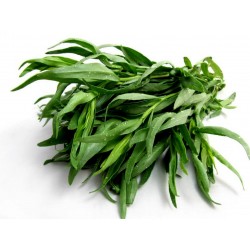
Mexican Tarragon Seeds...
Fiyat
€1,95
(SKU: MHS 84)
Seeds Gallery EU,
5/
5
<h2><strong><em><span style="text-decoration: underline;">Mexican Tarragon Seeds (Tagetes lucida)</span></em></strong></h2>
<h3><span style="color: #ff0000;"><strong>Price for Package of 50 seeds.</strong></span></h3>
<p>Tagetes lucida Cav. is a perennial plant native to Mexico and Central America. It is used as a medicinal plant and as a culinary herb. The leaves have a tarragon-like flavor, with hints of anise, and it has entered the nursery trade in North America as a tarragon substitute. Common names include sweetscented marigold',[3] Mexican marigold, Mexican mint marigold, Mexican tarragon, Spanish tarragon, sweet mace, Texas tarragon, pericón, yerbaniz, and hierbanís.</p>
<p> </p>
<p>Tagetes lucida grows 18-30 inches (46–76 cm) tall. Depending on land race, the plant may be fairly upright, while other forms appear bushy with many unbranching stems. The leaves are linear to oblong, about 3 inches (7.6 cm) long, and shiny medium green, not blue-green as in French tarragon (Artemisia dracunculus var. sativa). In late summer it bears clusters of small golden yellow flower heads on the ends of the stems. The flower heads are about 0.5 inches (1.3 cm) across and have 3-5 golden-yellow ray florets.[4] The flowers are hermaphroditic (have both male and female organs) and are pollinated by insects.</p>
<p> </p>
<p><strong>Uses</strong></p>
<p>Fresh or dried leaves are used as a tarragon substitute for flavoring soups, sauces etc.</p>
<p>A pleasant anise-flavored tea is brewed using the dried leaves and flower heads. This is primarily used medicinally in Mexico and Central America.</p>
<p>A yellow dye can be obtained from the flowers.</p>
<p>The dried plant is burnt as an incense and to repel insects.</p>
<p>Tagetes lucida was used by the Aztecs in a ritual incense known as Yauhtli.[7] The Aztecs allegedly used Tagetes lucida as one of the ingredients in a medicinal powder which was blown into the faces of those about to become the victims of human sacrifice and which may have possessed stupefying or anxiolytic properties.The plant was linked to the rain god Tlaloc.[8] The plant is also used by the Huichol, mixed with Nicotiana rustica (a potent wild tobacco), for its claimed psychotropic and entheogenic effects.</p>
<p> </p>
<p>In one study, methanolic extract from the flower inhibited growth of Staphylococcus aureus, E. coli, and Candida albicans cultures. This effect was enhanced with exposure to ultraviolet light. The roots, stems, and leaves also had the same effect when irradiated with UV light.</p>
<p> </p>
MHS 84 (50)





